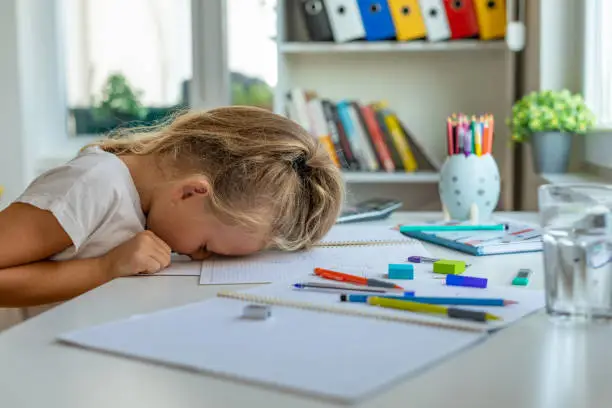Children with ADHD who exhibit impulsivity can pose serious problems for both the kids and the adults who look after them. This conduct frequently shows up as impulsive behavior, trouble waiting their time, and emotional reactions to events without taking the repercussions into account. These unintentional behaviors are frequently caused by ADHD’s effects on the brain’s impulse and emotion regulation. It takes a combination of knowledge, tolerance, and practical techniques that promote self-control and resilience to deal with impulsivity. Parents and teachers can help kids make better decisions, interact with others more effectively, and foster a more peaceful atmosphere by putting customized strategies into practice.
The following 22 tips provide practical and research-backed methods to guide on how to reduce impulsivity in ADHD child and build a foundation for long-term success.
1. React to Impulsivity Quickly
Instant feedback is beneficial for children with ADHD when they behave impulsively. They may become confused or the link between activity and consequence may be weakened by delayed responses. Deal with impulsive behavior quickly but calmly, guiding it with constant and transparent communication.
2. Focus on Accountability
For kids with ADHD, consistency is key. A regular schedule lowers anxiety and fosters a disciplined atmosphere that makes impulsivity less likely to occur. Set up daily routines for meals, homework, and bedtime, and try your best to follow them.
3. Keep the Routine Similar Every Day
For kids with ADHD, consistency is key. A regular schedule lowers anxiety and fosters a disciplined atmosphere that makes impulsivity less likely to occur. Set up daily routines for meals, homework, and bedtime, and try your best to follow them.
4. Patience Is Just as Crucial
It requires time and effort on the part of the child and their caregivers to control impulsivity. Being patient helps you maintain composure in the face of adversity and strengthens a positive environment. To maintain the momentum, acknowledge and celebrate minor accomplishments.
5. Let Minor Misbehavior Slide
Intervention is not always necessary for impulsive behavior. By choosing your conflicts wisely, you can prevent needless frustration and concentrate on important matters. For small errors, it’s frequently more beneficial to ignore the behavior or give mild reminders rather than correcting it right away.
6. Setting Clear Rules and Expectations
When kids with ADHD are aware of expectations, they perform better. Establish basic, unambiguous norms and spell out the repercussions of breaking them. Charts and posters are examples of visual tools that can be used to continuously remind people of these expectations.
7. Teach Them to Problem Solve
Lack of problem-solving abilities is frequently the root cause of impulsivity. Guide kids through real-life situations to aid in the development of these abilities. For instance, ask, “What could you do differently next time?” if they take a toy from a sibling. This encourages introspection and critical thinking.
8. Engage in Calming Activities
Children with ADHD can better control their emotions and impulses by engaging in calming activities like reading, sketching, or listening to music. These pursuits encourage relaxation and offer a respite from excessive stimulation.
9. How Kids Develop Impulse Control
As kids get older, impulse control increasingly improves. It may take longer for children with ADHD. Over time, this ability can be strengthened by engaging in challenging activities that test their patience, such as waiting their turn during games or following instructions that require multiple steps.
10. Learn Progressive Muscle Relaxation
A straightforward method called progressive muscle relaxation (PMR) helps kids learn how to control their impulsivity and tension. They can learn to control their impulses and become more conscious of their physical condition by tensing and relaxing certain muscle groups.
11. Practice Mindfulness
Children who practice mindfulness are better able to concentrate on the here and now, which lessens impulsive behavior. They can become more self-aware and better at controlling their emotions by using techniques like deep breathing, guided visualization, or brief meditation sessions.
12. Consistent Routines and Structure
Emphasizing the value of routines, consistency provides stability for kids with ADHD. Unpredictability is decreased in structured settings, which aids in maintaining focus and reducing impulsive behavior.
13. Teach Delay of Gratification
The capacity to postpone gratification is directly related to impulse control. To strengthen this ability, practice waiting to enjoy a beloved snack or save money for a desired toy. Reward them for their patience.
14. Encourage Physical Activity
Frequent exercise helps control impulsivity by lowering hyperactivity and enhancing focus. In addition to providing a constructive outlet for energy, team sports, martial arts, and swimming instill collaboration and discipline.
15. Establish Household Rules
A framework for behavior is provided by clear and consistent household rules. To encourage collaboration and a sense of ownership, have your youngster help create these rules. Make sure the regulations are reasonable and age-appropriate.
16. Use Impulse Control Games
Games that require taking turns, such as “Simon Says,” “Red Light, Green Light,” or board games, are great for teaching impulse control. These games reinforce self-regulation abilities while making learning entertaining and interesting.
17. Make Sure You Understand the Behavior
There are frequently underlying reasons for impulsive behavior. Spend some time figuring out why your child behaves impulsively in particular circumstances. Are they overstimulated, bored, or nervous? Knowing the underlying problem enables you to properly customize your answer.
18. Implement a Reward System
Desired behaviors are encouraged by positive reinforcement. Make a reward chart in which your youngster can earn stickers or points for reining in their impulses. Give them little perks or prizes for their accomplishments, like more screen time or a favorite delicacy.
19. Social Skills Training
Because they are impulsive, kids with ADHD frequently have trouble interacting with others. To teach children acceptable behaviors like waiting their time, listening, and respecting others’ limits, sign them up for social skills classes or have them act out scenarios at home.
20. Suggest Alternative Behaviors
Redirecting impulsive actions toward acceptable alternatives is a practical strategy. For instance, if your child tends to shout answers in class, teach them to raise their hand and wait to be called on. Practice these behaviors until they become habitual.
21. Teach Self-Awareness
In order to control impulsivity, self-awareness is essential. Before they behave impulsively, teach your child to identify their emotions and bodily signs, such as clinched fists or a beating heart. Building this awareness might be facilitated by journaling or talking about feelings.
22. Use Discipline Effectively
Teaching, not punishment, should be the main goal of discipline. Make use of reasonable repercussions that are pertinent to the behavior. For instance, your child may be temporarily denied access to a toy if they break it out of rage. Without inciting animosity, this strategy emphasizes the value of exercising self-control.
Conclusion
Learning how to reduce impulsivity in ADHD child is a journey that requires understanding, consistency, and patience. By incorporating these 22 tips into daily routines, parents and educators can help children develop better self-regulation and social skills. Remember, progress may be gradual, but each step forward builds the foundation for a more controlled and confident future for your child.

